Pradeep Kumar Panda
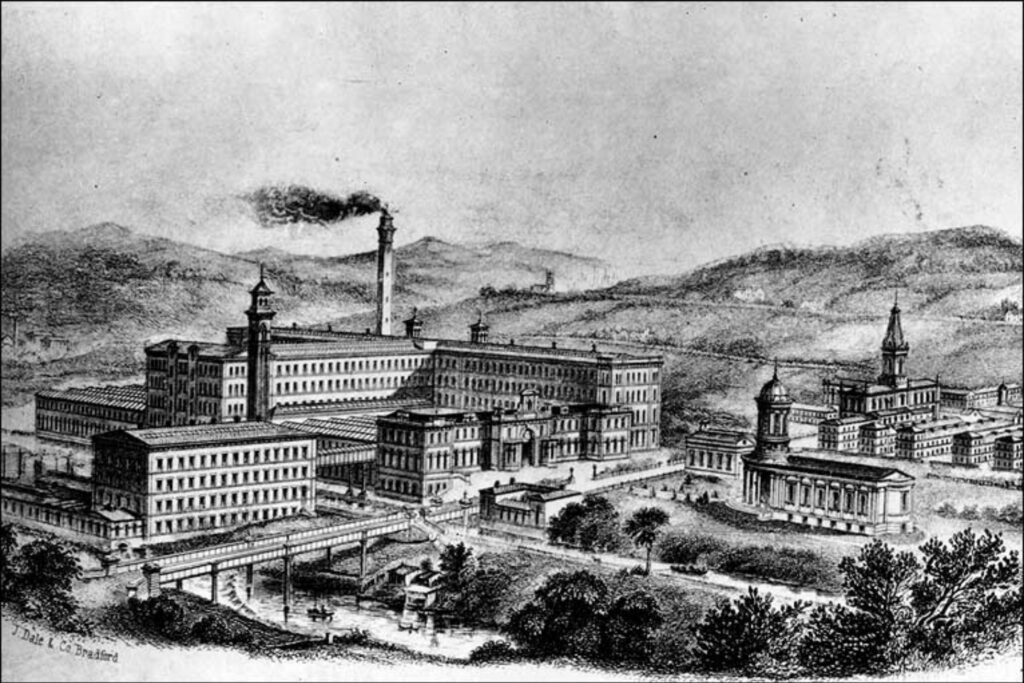
Since the Industrial Revolution, people have been polluting the Earth like never before. There is rarely a place today that has not been subjected to pollutants in one form or another.
Some pollution comes in a visible form, like pieces of plastic washed up on our beaches or illegal dumpsites in groves nearby large cities, other pollution comes in a hidden and perhaps even more dangerous form, in the air we breathe daily.
Our continuous existence depends on the clean air and yet our activities are constantly releasing extremely toxic particles that contaminate our atmosphere.
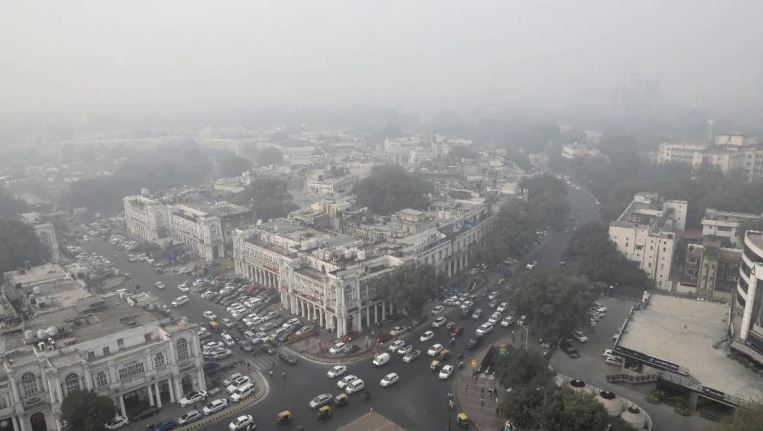
Polluted air is costing us lives
The issue has become so serious that scientists attribute a large number of deaths to ever increasing effects of air pollution. In fact, polluted air kills each year more people than malaria or tuberculosis. Some cities are even shut down during certain parts of the year because the air is so toxic that it is impossible to function.
Another alarming record comes from New Delhi in India, infamous for its pollution exceeding safe air quality levels by 20 times on days when thick smog wraps around the city. According to a study by the Chittaranjan National Cancer Institute, almost half of Delhi’s children develop irreversible lung damage during their childhood years.
To imagine the severity of the global pollution even better, there is an animal in the remote Arctic whose body contains one of the highest level of pollutants of any organism on this planet. The word is about a polar bear who is due to the global distillation effect exposed to anthropologically created pollution even in the most remote corner of the planet.
Although increasing number of countries enforce stricter regulations to prevent further emissions of air pollutants, there is still a lot to do on an individual level.
The key to have a healthier life is to adopt measures that do not pollute air so much because we all have a role to play when it comes to creating healthy environment for living.
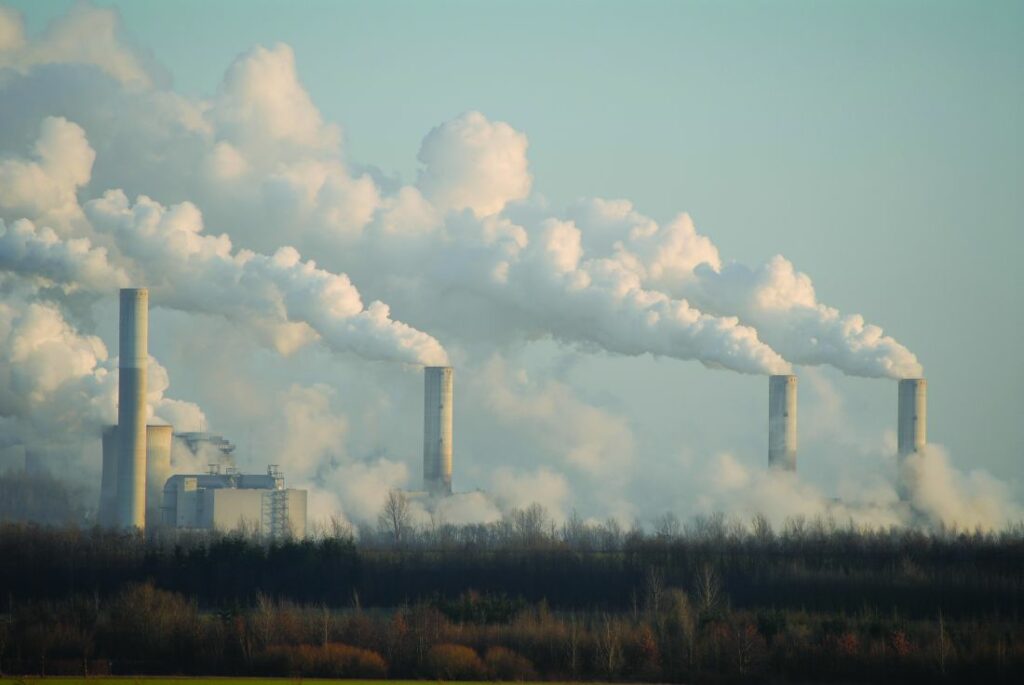
Simple ways to reduce outdoor air pollution
Being aware and changing our habits is the only way to reversing negative actions we have adopted in our modern lifestyles. Even though some initiative needs to be taken by authorities, individual habits still can make a big impact. If not globally, they will make impact locally – directly in the environment where you live.
The following list will help you get started with the transition to improving the quality of your life by addressing the problem of air pollution and learning about ways of reducing it.
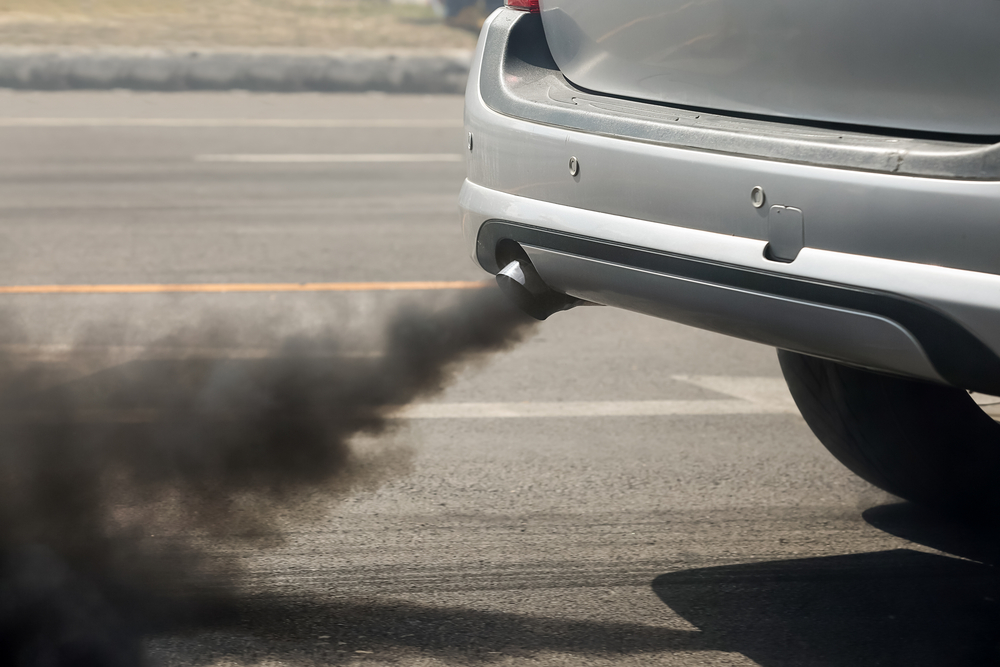
#1 Minimize air pollution from cars
Road transportation is one of the biggest emitters of nitrogen oxides. Oxides of nitrogen are closely monitored air pollutants with an adverse effect on healthy lung development and the overall lifetime expectancy.
The problem of harmful emissions from cars can be felt especially in cities with heavy traffic. Personal diesel cars and smaller vans top the list of the dirtiest polluters in such instances.
As a driver, you can help reduce pollution from your car by sticking to a few simple rules.
Remember:
- When you are out for a drive, do not idle your vehicle.
- Drive less by combining trips, telecommuting, carpooling, or carsharing. A great idea is to bring your lunch to work, so you do not have to drive out during the lunch break, or agree with your co-workers ongoing to get lunch together.
- Do not speed up or drive aggressively because that only produces more emissions.
- If possible avoid driving out during rush hours.
- When you are in the market to buy a new vehicle, consider buying a car that has done well on emission tests. In general, newer models have better fuel economy than older models because they are developed with the latest technologies.
- Go away from diesel cars. Diesel cars emit more nitrogen oxides than petrol cars.
- If you want to choose the cleanest option, look into hybrid or all-electric cars. These cars should have a smaller ecological footprint than conventional cars do. Although it is important to realize that there are still some emissions involved.
- Be sure to keep your car tuned and regularly replace air filters at recommended intervals.
- Even something so easily overlooked as keeping your tires properly inflated plays a role in the amount of gases your car will emit. When the tires are not properly inflated, your car needs to burn more fuel and therefore pollutes the environment on a larger scale.
By following this advice you will definitely help reducing air pollution caused by cars, but you should still be aware that any car with an exhaust pipe will emit some amounts of nitrogen oxides, particulate matter, carbon monoxide and carbon dioxide into the air. Therefore, the most effective strategy to keep the air clean is to avoid driving your car when possible.

#2 Walk, bike or use public transportation to reduce air pollution
When you have the option, take public transportation to get to work. Many cities have already invested in a good public transportation network and by choosing public transportation (even just one or two days a week) you are helping to reduce the number of cars on the road.
Many municipalities also offer great benefits to encourage people to use their public transportation. Some commonly applied advantages are cheap long-term fares, shorter times to reach your destination, short waiting times, punctuality, and fares for free at certain hours, weekends or for seniors and students.
Additional benefit to consider is that many cities place emphasis on lowering carbon emissions of their public transportation means. They invest in electric buses and other modern vehicles that enable them to do so. The website of the abundantly used public transportation in Vienna mentions that every person who switches to public transportation prevents 1,500 kg of carbon dioxide from being released into the air each year.
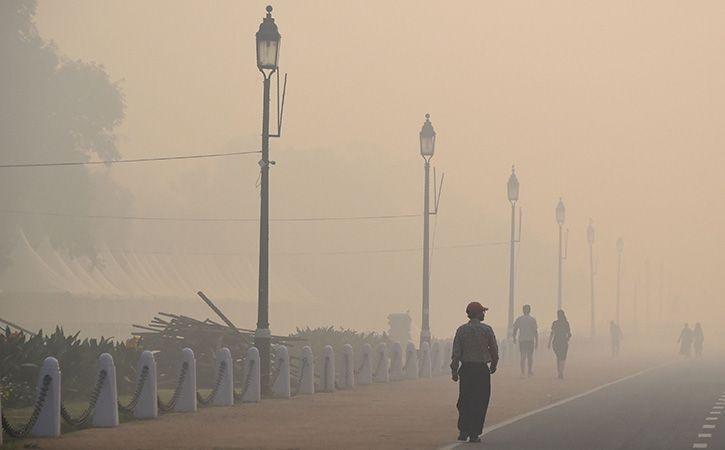
Walking or riding a bike to get to work comes with numerous benefits for your wellbeing. You can take less frequent roads and backstreets to arrive to work sooner and less stressed than you would be if stuck in traffic. Both of these activities also contribute to maintaining active lifestyle and improving your self-confidence and health.
However, when biking or walking you should take into consideration the level of already existent air pollution along your route. If you cannot avoid too busy roads, it’s better to stick with public transportation because on bike you would directly breathe all the emissions produced by the heavy traffic.
#3 Save energy and make sure you use energy efficiently
In 2016, the International Energy Agency released a report with the key statement that “air pollution is an energy problem.”
Similar concept repeats in other scientific papers. For example, the International Journal of Environmental Research and Public Health published a study that lists a myriad of health problems arising from air contamination due to the combustion of fossil fuels.
Burning of fossil fuels for energy production releases potent pollutants such as:
- Sulphur dioxide
- Nitrogen oxide
- Mercury
- Black carbon
- Polycyclic aromatic hydrocarbons
- Carbon dioxide
- Particulate matter
All of these substances are known to have negative impacts on human health and the environment.
That is why being mindful about your energy consumption matters. Decreasing your energy need will not only save you money on utility bills but more importantly will benefit your health in the long-term.
When you save energy, whether it is at home, at work, or while you are traveling, you are reducing production of many polluting substances as well as carbon emissions that make the air dirty and cause global warming.
Some effective strategies to lower your energy consumption to set you on the right track are:
- Increase energy efficiency of your home
Make sure you use energy efficiently. - Minimize the use of air conditioners
Use air conditioners in the summer only when absolutely necessary. Air conditioners need much more power than fans do. Give a try to strategically placed fans and open windows at night to cool down your room. - Use appliances smartly
Run your dishwasher and washing machine only when full and if possible at night. When running these appliances outside the peak hours, it is more likely that the biggest (and the most polluting) power plants won’t work because the demand for power is lower and can be covered from smaller power plants that often use newer technologies. - Switch to renewable energy
Renewables are much cleaner version of power generation. The technology has made such a great progress that there are many affordable options and programs available for the residential use of renewable energy nowadays.
For example, photovoltaic solar panels produce energy without emitting gases. So, if you switched to solar energy, you would lower your personal amount of emissions significantly – the exact number depends on how much of your total energy demand would be covered entirely from solar power.
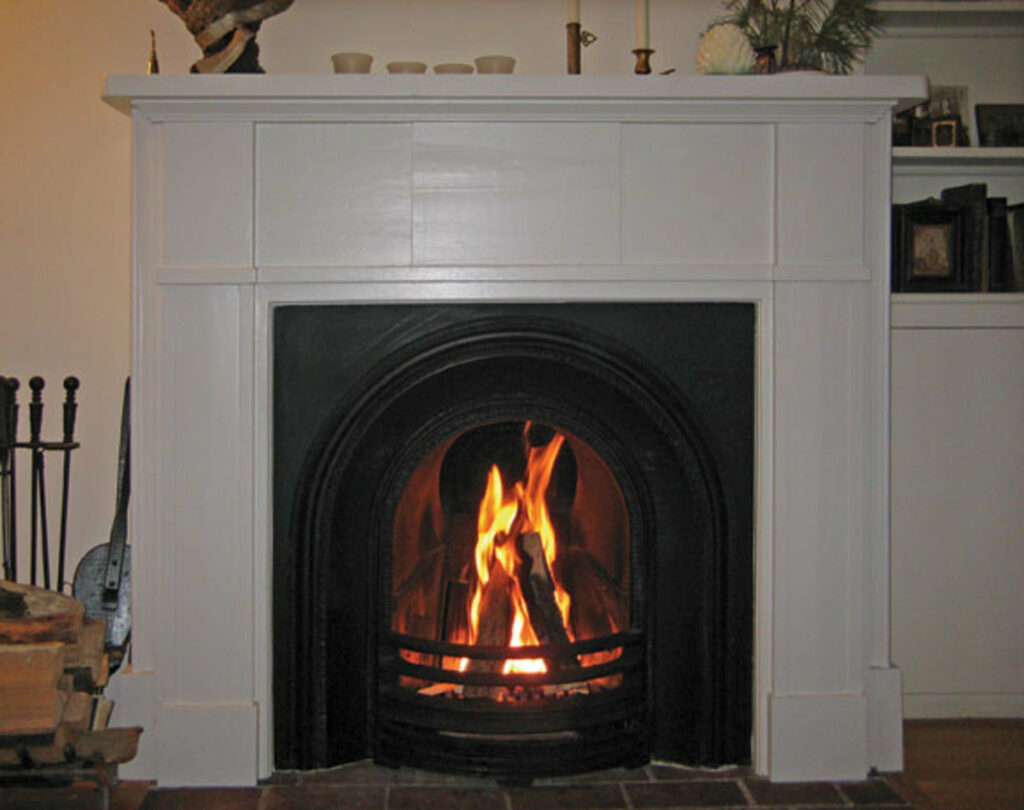
#4 Take a good care of your wood stove or fireplace
If you own a wood burning stove or a fireplace, be sure to keep it well-maintained. When burning fire-wood in wood stoves, incomplete combustion often releases particulate matter of a very small size (less than 2.5 micrometer). These tiny particles are the most harmful to our respiratory tracts because they can easily get deep into our lungs, and for their small size may even enter our bloodstream.
Other noxious gases released from fireplaces and wood stoves are:
- Benzene
- Aldehydes
- Carbon monoxide
- Nitrogen oxides
What amount of emissions your stove produces depends on:
- The efficiency of the woodstove
Newer models are usually more efficient than older, improperly maintained models. Old wood stoves from 80s release three to six times more particulate air pollutants than newer stoves. This is due to lower burning temperature and insufficient aeration.
You should also preferably have the stove (fireplace) installed by a professional with a necessary certification. This ensures that your stove will perform with the best efficiency and at the lowest risk of unwanted accidents.
- The type and the condition of fuel you are burning
Dry firewood burns better than humid wood. It will thus emit less air pollutants. Also make sure you don’t burn wood with paint, glue or other coatings because it could release additional toxins into the air.
Pellets made of compacted sawdust and wood waste are a less polluting and more heat-producing alternative to wood.
#5 Recycle and buy recycled products
Imagine all complex processes needed to create new items from scratch. You need to begin with mining for raw materials. Mined materials then need to be transported, cleaned from impurities, processed and treated until they can finally be transformed into desired products.
Each stage of the manufacture from raw materials is accompanied by emissions of polluting particles, heavy metals, chemicals and greenhouse gases.
It also takes more energy to make new items from raw materials, increasing the environmental footprint (including the air pollution that is produced) of those products, compared with those products that are made from recycled materials.
Since recycled products have already been extracted and processed once, manufacturing the same products the second time is much less-energy intensive and polluting.
#6 Consume less and choose sustainable products
A 2017 study published in the International Journal of Science highlighted that 22% of premature deaths caused by air pollution happened in countries that produce (cheap) goods for export to developed countries.
European and North American love of cheaper gadgets from China actually killed more than 100,000 people in Chinese towns where factories manufacturing many of our favorite products are located.
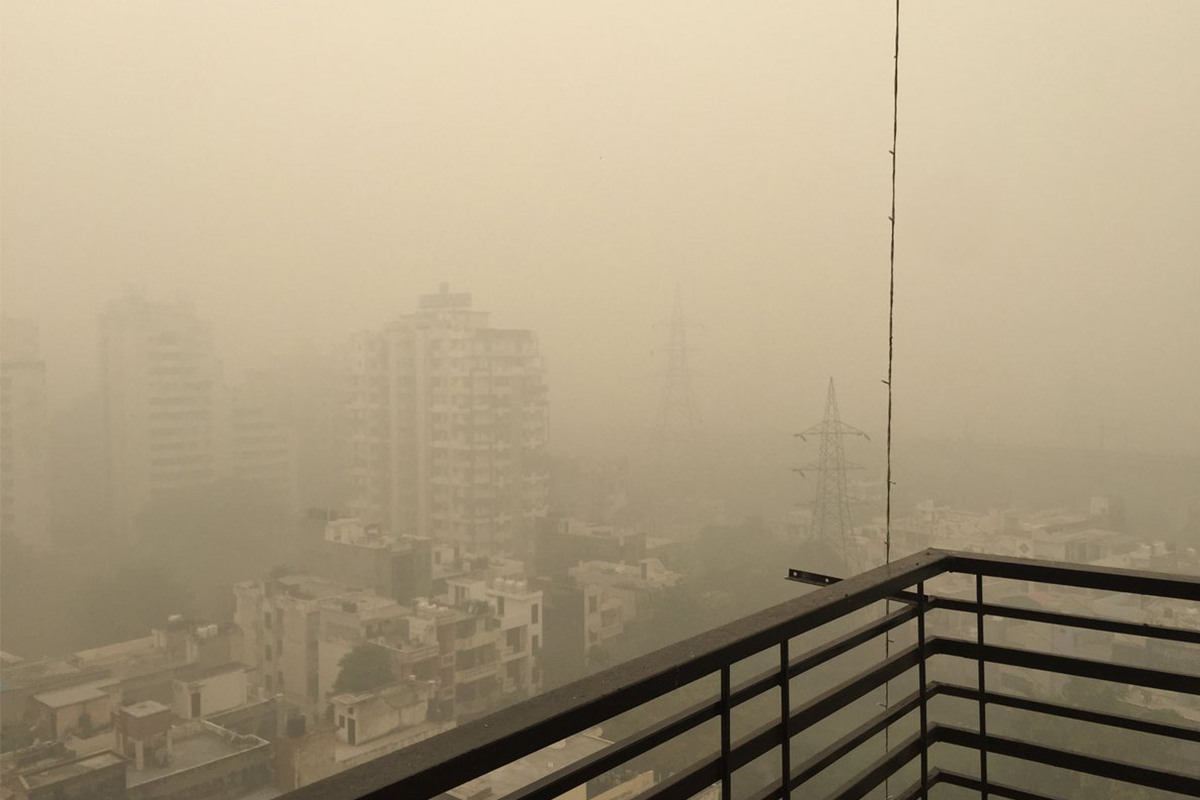
Higher levels of environmental pollution in these regions are often due to weak or lacking emission restrictions in place (which is also why these goods can be produced at a lower cost), but the air they are polluting is still part of the same air you are and will be breathing for as long as you are on this planet.
So, our consumption patterns affect pollution levels globally. Even if you haven’t ever traveled to China, your choice of products in your local supermarket will decide whether you encourage polluting businesses abroad.
Consuming less and thinking twice before buying new item is the best you can do for the environment and the air quality. If you need to buy new products, whatever they are, support local companies that are committed to sustainable manufacturing practices and reducing pollution in the air.
#7 Eat local and organic produce and eat less meat
In countries with intensively farmed lands, agriculture is the main emitter of ammonia and other nitrogen-containing compounds like nitrous oxide or nitric oxide. Livestock farming also emits high concentrations of methane, a potent greenhouse gas, and non-methane volatile organic compounds.

Agricultural pesticides and fertilizers release Persistent Organic Pollutants, such as hexachlorobenzene, hexachlorocyclohexane, and pentachlorophenol in the air. Now, consider that the air you breathe may contains also these compounds with their complex names.
A study by the Earth Institute of Columbia University warns over health-damaging effects of gases emitted from conventional agriculture in combination with industrial emissions. The research says that when these pollutants combine together, they form fine particles that easily damage our respiratory system, leading to chronic health problems.
Organic agriculture is not entirely emission-free as well, but the amounts of many pollutants are lower.
This is due to a number of reasons:
- Nitrogen input to organic soils is lower, so even nitrogen compounds escaping into the air decrease.
- Sustainable soil conservation practices such as no-tilling, green manuring and crop rotation help preserve nutrients in soils where they are utilized by plants instead of being lost into the environment as often happens in heavily tilled crops.
- Healthy, well-aerated soils with good microbial activity have improved methane uptake.
If possible, consider buying organically-grown produce over the conventional one, and look for local products because this way you cut down emissions from transportation and energy needed to get the food on your plate.
A very important step to take in regard to your consumption pattern is to eat less meat. You may have heard already about the significant greenhouse gas footprint of the modern livestock industry. By going meatless some days a week or eating maximum 90 grams of meat a day, you will lower air pollution and will even benefit your health (and wallet – since plant-based diet is cheaper).

#8 Grow your own food and eat seasonal products
It is easy to get produce from all over the world these days. Just a quick trip to supermarket opens up a world of a great variety of exotic fruits, vegetables and spices. Although, having such a great diversity is wonderful, it always comes with a cost – in this case the cost of polluting the air we breathe by long-distance transportation.
Just think about it. Bananas imported from Costa Rica, Guatemala, Honduras or other exotic destinations. Kiwis from Italy, Chile, New Zealand… Mangoes brought from Thailand, Philippines, India or Pakistan. These favorite fruits have to travel really long distances to make it to your supermarket.
One easy and fun way to make sure you have a nutrient-rich diet, which even helps offset some of the harmful emissions of the food industry, is to grow your own food. This way you will have direct access to fresh produce of your preference, and you will even be sure that what you eat is chemical-free.
If you are unable to grow fruits and vegetables due to time and/or space limitations, stick to the rule of eating mostly seasonal products that are native to your area. The reason for this is very simple – when in season, products will be more likely sourced from regional farmers.

#9 Plant trees
Trees around your house and in your neighborhood help reduce air pollutants significantly. Researchers from the University of Southampton measured the ability of trees in London to remove particulate pollutants from the air. Their findings were truly astonishing. Trees remove between 850 to 2,000 tons of harmful particles from the urban air each year.
Except of removing the particulate matter, trees also decrease levels of nitrogen dioxide, sulphur dioxide, carbon dioxide and monoxide, ozone, benzene and dioxin.
Some of the most efficient tree “air cleaners” are large-growing species with leaves. For example, common ash, ginkgo biloba, oak, various linden trees and elms.
Trees planted alongside roads or on the boundaries of your property also slow down polluted air from being carried far by wind. You can think of it as a protective shield formed by tree canopy. This way trees prevent spreading of air pollution over large distances. Then, they gradually filter the pollution at the spot without giving it much chances of contaminating neighboring areas.
But trees are not only natural air filters, they also cool down summer temperatures by a few degrees. Even the slightest temperature reduction can make a real difference in keeping the air clean because many compounds and ground-level-ozone-forming chemicals are temperature dependent. This means that they transform into pollutants only when outdoor temperature reaches certain level. Additionally, cooler temperatures are more comfortable for our wellbeing, which makes trees a great substitute for energy demanding air conditioners.

#10 Raise awareness and become interested in local matters
Awareness-raising can be the first step to increase the knowledge of people around you and start the change in their attitudes towards mitigating the problem of poor air quality in affected areas.
As you can see most of these ways on dealing with air pollution are rooted in the consumer behavior. Often, all it takes is just being a little bit more aware of the impact of your personal decisions as a consumer on the air quality–even so far from you as on a different continent.
By making conscious consumer choices, your initiative can serve as a good example to your friends, family and community. This way you can become one of the initiators of a bigger change in your area.
Equally important is to express your support to public policies and representative politicians who work to protect the air and the environment. If you care about the quality of life in the place you call home, it is necessary to stay informed and take supportive actions for good causes.
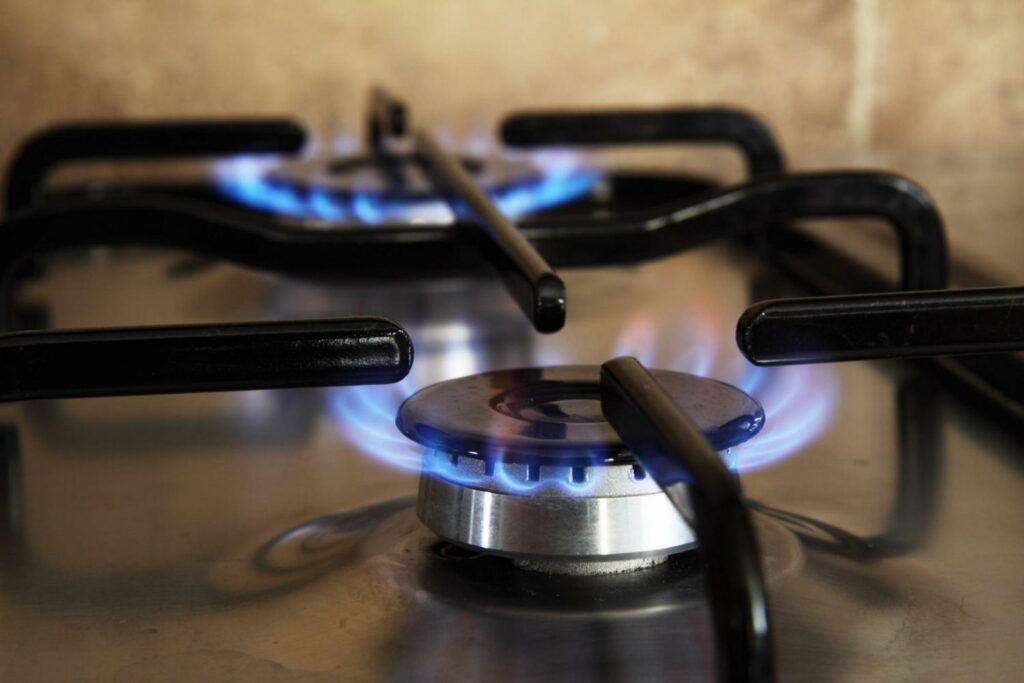
Preventive measures of indoor air pollution:
When we think of air pollution, most of us think of poor outdoor air quality. However, did you know that indoor air is on average two to five times more polluted than outdoor air? This happens because the air circulation indoors is much lower than outdoors, which allows toxins from dust particles, vapors from cooking, painting or furniture dyes to accumulate inside our houses.
And since most of us spend so much time indoors, we are at a higher risk of developing health issues from the toxic indoor air. In fact, the World Health Organization estimates that 30 percent of global diseases are a result of indoor air pollution.
For example, one of the most common indoor pollutants is formaldehyde. Sources of formaldehyde are everywhere around us. It can be found in furniture, insulation, textiles, wallpapers, glues, detergents, softeners, disinfectants, cosmetic products and even in electronics. But did you also know that increased concentrations of formaldehyde cause irritations, asthma and eczema?!
It’s time to become more cautious about what pollutants you introduce to your life. And since you have already learned how to help reduce outdoor air pollution, it is time to have a look at some preventative measures that will teach you how to improve air quality in your home and office.
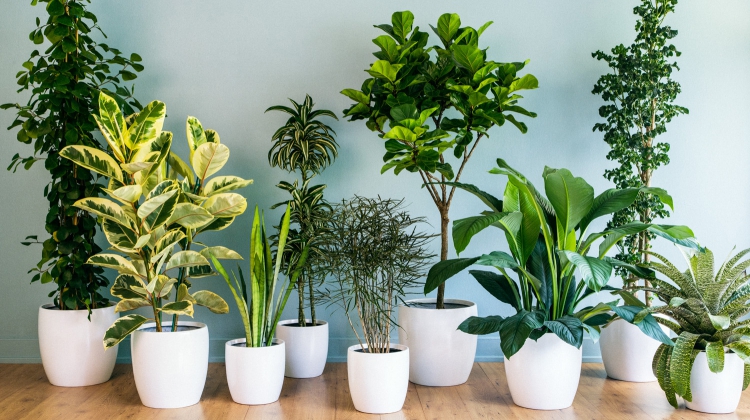
#11 Keep air purifying indoor plants
Very elegant solution to improving air indoors, that would also have a beneficial effect on our health, is keeping houseplants.
Many houseplants have the same ability as trees to metabolize air pollutants from indoor spaces as well as refresh air by removing carbon dioxide and replenishing oxygen levels. Plants with large leaves that originate from tropics and rainforests are especially effective in doing so.
Some examples of the best houseplants for cleaning indoor air are:
- Spider Plants
- Peace Lilies
- Snake Plants (“Mother-in-Law’s Tongue”)
- Elephant Ears
- Weeping Figs
- Rubber Plants
- Bamboo Palms
- Heartleaf Philodendron
Common indoor toxins these plants can absorb include compounds such as formaldehyde, xylene, benzene, trichloroethylene, toluene, octane and carbon monoxide.

#12 Open your windows
Opening your windows fully at least once a day for three to five minutes can replace stagnant and polluted indoor air with fresh air from outside.
It is important to let the air in your house circulate even for short periods of time because this way you let accumulated toxins out and decrease humidity that gathers from many indoor activities like cooking, doing laundry or taking a steamy shower.
One of the common issues of well-insulated houses is that indoor-outdoor air exchange is entirely disabled. While this is a desired effect when it comes to preserving heat and energy, it is not the best for maintaining healthy air quality inside. If that’s the case, the stagnant air in your house needs to be refreshed once a while by opening windows to create a little draft.
Do not forget to open your windows to ventilate a room if you must use any volatile chemicals, such as those found in paint strippers and paints. Better yet, look for low- or no-VOC products to avoid being exposed to the toxic fumes from these products in the first place.
#13 Use natural products and non-toxic cleaners
When purchasing household products for your home and your yard, opt for the cleanest and greenest products that don’t contain any harmful polluting chemicals.
The majority of the air fresheners, detergents, paints, and cleaners on the market contain toxic substances, such as volatile organic compounds (VOCs), that easily vaporize into indoor air.
VOCs represent a variety of chemicals derived from petroleum, for example, formaldehyde, benzene, perchloroethylene and chlorofluorocarbons.
These chemicals not only pollute indoor air, they can be detrimental to your and your pets’ health. Some symptoms include irritations, nausea, dizziness, asthma, liver and kidney failures, central nervous system damage and cancer.
To minimize your exposure to these chemicals, choose products that have been made with natural substances, and do not produce harmful fumes.
When seeking out natural products, resources such as the Environmental Working Group’s Guide to Healthy Cleaning and the United States Environmental Protection Agency Safer Choice page are great places to learn about the product safety.
A few great tips to stick to:
- Opt for no-VOC or low-VOC paints, stains, finishes, paint strippers, and glues. Paint with a brush rather than spray.
- Instead of using chemical-filled air fresheners, use essential oils, herbs and flowers to make your home smell nice.
- Use green cleaning products instead of conventional chemical-filled products.
- Use perfumes moderately or not at all. Perfumes consist of a number of synthetic chemicals that when being sprayed in the air break down into harmful compounds. You can learn more here.
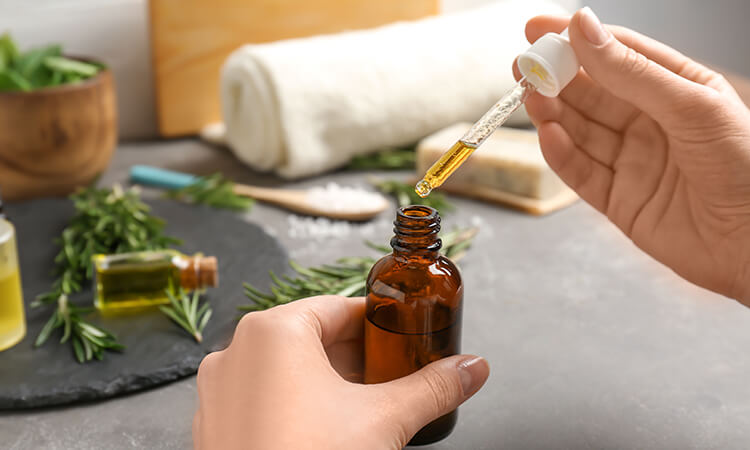
#14 Use essential oils
Essential oils are potent plant extracts that can be used for many purposes, including cleaning, purifying and freshening indoor air. They also offer an eco-friendly, healthy, and often more effective alternative to many chemical and synthetic products.
Using high quality essential oils in a diffuser will not only produce a nice scent throughout a room, you will also gain many health benefits from the complex natural compounds that the essential oils contain. For example, lavender oil with eucalyptus oil have calming properties; peppermint and chamomile oils are good for digestion and relieving symptoms of cold; rosemary oil improves concentration and memory.
You can also use essential oils to make your own homemade cleaning products and personal care products. Some favorite oils that have been used for skin and hair are rose, cedarwood, thyme or clary sage oils.
For purposes of purity, safety, and to experience the most benefits, be sure to use only therapeutic grade essential oils from a reputable company.
#15 Test your home for radon
Radon is an invisible, odorless and radioactive gas that naturally seeps up from the soil and bedrock of the Earth. It is one of the products of the radioactive decay of uranium, which can be found naturally in all rocks on this planet.
Most houses draw less than one percent of their indoor air from subjacent soils, but when your house is built on a highly permeable soil and foundations are not properly sealed, more than 10% of indoor air can come from the ground. This can lead to increased radon accumulation in the indoor air, even though its concentration in the soil is within safe limits.
It is good to know that radon can also seep from some building materials, such as granite countertops, alum shale concrete or volcanic tuff. Radon is after smoking the second most frequent cause of lung cancer, so it is important to have your home tested for it. The testing procedure is very simple and inexpensive.
When radon levels in your house are above limits, some mitigation strategies for reducing its concentration need to be applied. One reliable technique is ‘Active soil depressurization, ‘which draws radon from beneath the foundation and emits it outside.

#16 Do not smoke indoors
Do not smoke inside your home. Cigarette smoke contains up to 70 carcinogenic substances and toxins that remain in the indoor air for a long time.Passive exposure to the cigarette smoke can also cause serious health problems to other family members and pets.
Some of the health deteriorating compounds found in smoke include lead, arsenic, ammonia, carbon monoxide and nitrogen dioxide. By smoking in a confined space, the level of these compounds quickly exceeds safe limits without you even realizing the danger associated with inhaling them. For example, nitrogen dioxide contributes to seemingly unrelated health problems such as ear infections and development of food allergies in children.
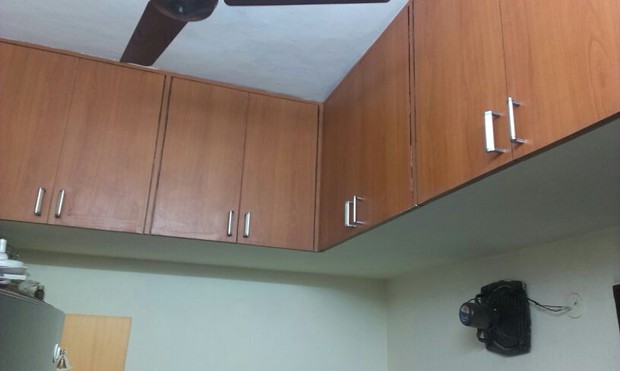
#17 Keep indoor humidity low
We do many activities at home that make rooms damp. But did you know that in humid environments hundreds of different bacteria species, fungi and molds thrive? And that breathing their spores affects the health of your skin and respiratory tract?
Keep your home dry to prevent mold and mildew from proliferating. The US Environmental Protection Agency recommends keeping an indoor humidity level of 30% to 60%.
You can do this by opening windows to exchange air inside your house. Remember that stagnant air retains all the moisture from your activities, so you should allow proper air movement by creating a draft inside at least once a day.
Use exhaust hoods or fans to reduce the level of moisture that can travel throughout the air when you cook or take shower. When showering, keep the bathroom door closed to not let excess humidity out. Rather leave the fan remove the moisture after you finish the shower.
Also, when possible dry your clothes outside. If necessary, use a dehumidifier to reduce the humidity level of your home.
Hysure Portable Dehumifier is a great product to buy for this purpose. This dehumidifier is a product we recommend because it is easy to operate and is very quiet, so it will not disturb you when sleeping. Most importantly, it is efficient in removing moisture (approximately 750 ml of per day) and has low energy consumption.
Even customers’ reviews confirm that this dehumidifier performs well and is worth the money if you have humidity problems in some rooms. For example, one review states that it can decrease the amount of humidity by 20% in a garage. Other review highlights how easy its maintenance is.
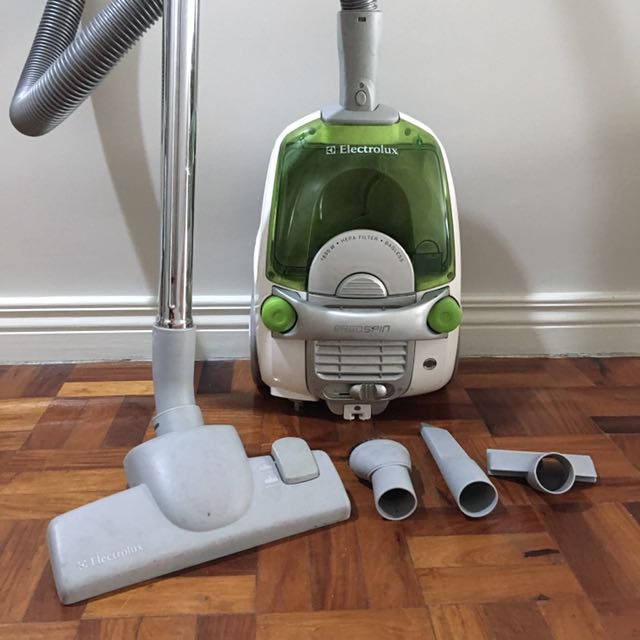
#18 Vacuum clean with a HEPA filter
It may sound surprising, but some vacuum cleaners actually contribute to indoor air pollution.Vacuum cleaners without a proper filter, that would allow small particles escape back into the air, only worsen home air quality by stirring and redistributing pollutants.
To be sure you are not causing more harm when cleaning your house, use a vacuum cleaner that has a HEPA (High Efficiency Particulate Air) or ULPA (Ultra Low Penetration Air) filter.HEPA filters should be able to capture 99.7 percent of particles as small as 0.3 micrometers. ULPA filters perform even better by retaining 99.9 percent of particles of 0.12 micrometers in size.
The design and cleaning efficiency are also important criteria. No HEPA filter will perform as promised if the vacuum cleaner is not properly sealed. Only well-sealed vacuum cleaners direct all collected particles to pass through the filter.
When looking for a new vacuum cleaner, make sure that it contains the real HEPA filter and not something labelled misleadingly as “HEPA-like” or “HEPA-type” filters. Beware of this marketing trick to confuse customers, as these types of filters might not comply with the standards of removing the most harmful particles.
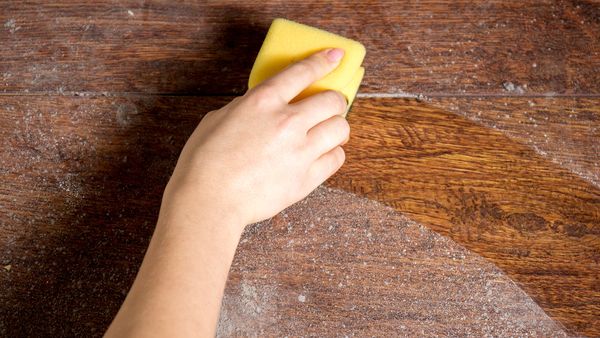
#19 Keep your home dust free
According to researchers, most household dust is a mixture of organic matter and particulate matter from outdoor air, which is brought inside every time you, other family members or your pets come from the outside.It includes tiny particles like dead skin cells, pet dander, microscopic soil particles from your shoes, decomposing organic materials, microfibers from clothing, bacteria, molds, and dust mites.
Scientists have also found traces of many chemicals in common household dust. These chemicals usually originate from cleaning products, plastic items, paints, oil, cosmetics, pesticides or other products commonly used at home.
No one can write down a precise list of compounds contained in dust since they differ based on the area where you live, your lifestyle and your household, but every time you walk across a room, your kids play, pets run around, dust gets suspended into the air, from where it can be easily inhaled by you and your children.
You cannot prevent dust from entering your house, but you can minimize chances of your exposure to it by regular cleaning. Vacuum cleaners with HEPA filter should help in retaining most of the harmful particles (read the previous section to learn more about them). Do not forget to clean your heating and air conditioning filters, ducts, and vents regularly as well. It will reduce particles accumulated over the time from re-circulating throughout the air in your home.
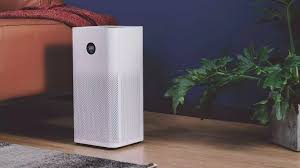
#20 Use air purifiers with HEPA filter
If you live in an area with poor outdoor air quality, it’s worth considering the use of air purifier at home. On critical days when authorities issue health warning, you should keep your windows closed and use air purifier to minimize the risk of breathing polluted air. For example, a two-year study in Salt Lake City, which chokes under a thick blanket of smog on cold winter days when inversion hits in, has found out that air purifiers with HEPA filters reduced fine particulate matter (PM2.5) in observed households by 55%.
Similar results were confirmed by other studies, coming to a conclusion that at least 50% of particulate matter can be removed by a high-efficiency air filtration system.Most modern air purifiers work with a multilayer filter system, consisting of a prefilter, a carbon filter, an antibacterial filter and a HEPA filter. You can even find some ENERGY STAR purifiers on the market that offer better energy efficiency.

Way Forward
Do not take the quality of the air you breathe every day lightly. It is easy to overlook your own health when other daily chores demand your immediate attention. But do not forget that throughout one day around 10,000 liters of air enter your lungs and take part of the most important metabolic processes in your body. Air is, therefore, an element that defines your health and determines the quality of your life, at the moment and in the future.
(The author is a New Delhi based Economist)






















